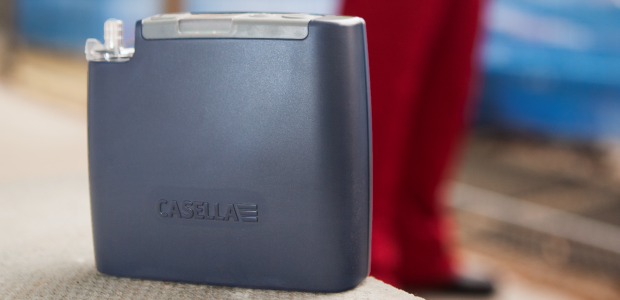
Preventing Worker Exposure to Silica Dust
OSHA has provided three different methods for employers to ensure employees are protected.
- By Tim Turney
- Oct 01, 2017
The introduction of OSHA's latest respirable crystalline silica standard has not been without difficulty. Implementation deadlines have been changed, and now enforcement was to begin in the construction industry on Sept. 23, 2017.1 The standard has generated discussion from groups including employers and laborers, who have called OSHA's predications infeasible, even questioning the link between respirable crystalline silica and subsequent long latency conditions, such as lung cancer and chronic obstructive pulmonary disorder.
Prior to the agreed enforcement date, OSHA expects employers to move toward compliance to the new permissible exposure limit (PEL) of 50 μg/m3, averaged over an eight-hour workday, similar to European countries.2 In a bid to make this process easier, OSHA has provided three different methods for employers to ensure employees are protected.
These methods are:
Table method: A table has been created listing the different tasks and equipment control methods that OSHA has determined will reduce the exposure to the acceptable level, taking different times and environments into consideration. If the task controls and equipment are provided, there is no additional need for air monitoring.
Performance or objective data: With this method, employers are permitted to use objective data to provide evidence that the control methods reduce the exposure limit to below the PEL. This could be air monitoring compiled by the employer or a third party that is sufficient to indicate the exposure. The data provided must reflect conditions that are similar or worse than the employer’s current work site conditions.
Scheduled air monitoring program: In this instance, exposure can be assessed through a dedicated air monitoring program where the employer generates its own data. Employers using this option are required to implement such a program when workers are exposed over the 25 μg/m3 action level over an eight-hour control period, and also to implement control methods.
To comply with the standard, the following schedule must be adhered to:
- If initial results indicate exposures are below the action level (25 μg/m3), no additional monitoring is necessary.
- If the monitoring results indicate exposures are above the action level but below the PEL, additional monitoring would be required within six months.
- If the exposure monitoring indicates exposures above the PEL, additional monitoring must be repeated within three months.
- If subsequent monitoring (not the initial monitoring) indicates exposures are below the action level, the employer must repeat the monitoring until two consecutive measurements (taken seven or more days apart) are below the action level. At that point, the employer can discontinue monitoring.
Air Monitoring: The Process
For a lot of employers, compliance with the new limits will require the implementation of a new monitoring program, and there are a range of solutions available for this process. For personal exposure, air sampling pumps should be used to ensure that individual exposure to dust can be appropriately measured. For wider area and site monitoring, systems range from tools used by site operators and managers to check the area to a web-based product placed on site where data can be captured remotely to ensure compliance with regulatory limits.
Monitoring must not impact the comfort or productivity levels of a worker. Technology has advanced so much now that the person conducting the monitoring doesn't need to physically follow workers throughout the day, and the data can be downloaded and analyzed elsewhere.
When starting workplace air monitoring, think about:
- What are the tasks and equipment likely to generate high levels of dust that you already are aware of?
- What needs to be measured—personal dust exposure, dust from a particular machine, or wider environmental monitoring?
- How are you going to report your measurements and learn from them?
Changing Cultures
There are a host of advantages in implementing a new workplace air monitoring system. These include the obvious benefits of ensuring compliance to the new respirable crystalline silica standard, recognizing potentially harmful levels, mitigating exposure risks, and improving worker health, but there are more.
Such a system also presents opportunities to engage more with your workforce through a dedicated education process, relaying the monitoring data back to employees and demonstrating the proactive steps being taken to ensure their health and morale, which in turn could boost productivity.
In time, employees will develop ingrained health awareness and be part of the path to positive change. Such processes may seem daunting and challenging, but if the time is taken to implement them properly and incorporate them into everyday working life, ill health statistics will be fundamentally improved.
References
1. https://www.osha.gov/pls/oshaweb/owadisp.show_document?p_table=news_releases&p_id=33810
2. https://www.aiha.org/government-affairs/Documents/CRS%20Silica%20Report-04-16.pdf
This article originally appeared in the October 2017 issue of Occupational Health & Safety.